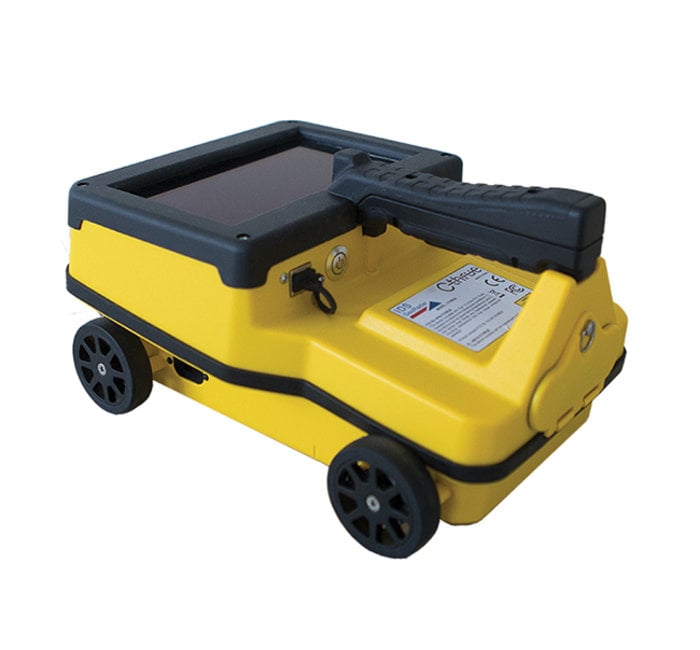The Value of Accurate Concrete Scanning in Finding Underground Hazards
The capability to accurately spot and map these below ground threats is not just a matter of ease but an important aspect of ensuring the safety and security of both building employees and the honesty of the task itself. By releasing advanced scanning innovations and methods, experts can uncover covert dangers, avoid expensive damages, and inevitably pave the means for smoother and safer construction endeavors.
Advanced Scanning Technologies for Discovery
Advanced radar systems are changing the area of below ground detection by offering exceptional precision and performance. These sophisticated scanning technologies use ground-penetrating radar (GPR) to develop detailed photos of subsurface frameworks, supplying understandings into what exists below the surface with remarkable quality. By releasing high-frequency pulses right into the ground and gauging the reflections, radar systems can identify variations in product composition and discover below ground dangers such as pipes, spaces, and wires.
Among the key advantages of these innovative radar systems is their non-invasive nature, enabling for extensive evaluations without creating damage to the existing frameworks. This not only makes certain the safety of the surrounding setting but likewise lessens the requirement for pricey repairs or disruptions to recurring construction jobs. Furthermore, the real-time information provided by these scanning innovations makes it possible for fast decision-making and enhances total job performance.
Importance of Subsurface Mapping

Exact subsurface mapping helps in avoiding pricey damages to existing underground facilities, decreasing the risk of mishaps, and keeping project timelines. It enables job supervisors to make enlightened decisions pertaining to site preparation, equipment deployment, and source allocation. Additionally, subsurface mapping permits better control among various teams dealing with a task and aids in abiding by regulatory requirements connected to underground utility detection.
Mitigating Dangers in Construction Jobs
Effective risk reduction methods are necessary for making sure the success and safety of building tasks. One essential element of mitigating dangers in building and construction jobs is comprehensive planning and evaluation at the first phases.
In addition, establishing clear interaction channels among all job stakeholders and ensuring stringent adherence to security procedures are vital parts of risk mitigation. By proactively executing durable risk reduction approaches, construction tasks can reduce hold-ups, cost overruns, and security cases, eventually leading to successful task outcomes.

Avoiding Pricey Problems and Delays
To reduce economic losses and job troubles, efficient techniques must be executed to avoid expensive damages and hold-ups in building tasks. One important method to accomplish this is by performing extensive concrete scanning before any excavation job starts. By utilizing sophisticated scanning innovations such as ground-penetrating radar (GPR) and electromagnetic induction, building and construction teams can accurately find underground hazards like rebar, conduits, and other utilities. Recognizing these blockages at an early stage assists in preparing the task format a lot more successfully and avoiding prospective damages during excavation.
Furthermore, buying training programs for construction workers on the relevance of concrete scanning and safe excavation techniques can considerably minimize the danger of hold-ups and accidents. Clear interaction channels between content task managers, engineers, and on-site employees are also important to ensure that every person recognizes the possible threats and complies with the essential methods to stop expensive damages. By prioritizing proactive actions like concrete scanning and promoting a society of safety and recognition, building jobs can minimize the monetary impact of unanticipated below ground blockages and avoid expensive delays.
Ensuring Safety of On-Site Personnel
By prioritizing aggressive Learn More measures such as comprehensive training programs and clear interaction networks, construction jobs can make sure the safety and security of on-site employees amidst the potential threats spotted via concrete scanning. Correct training outfits employees with the understanding and skills required to browse building websites securely, specifically when threats are determined via scanning processes. Training must cover risk acknowledgment, emergency situation treatments, and the proper use of personal safety tools to mitigate dangers effectively.
Furthermore, developing clear interaction networks is essential for sharing info concerning recognized threats quickly. This makes sure that all on-site personnel recognize prospective dangers and can take necessary precautions to avoid crashes. Regular safety briefings, tool kit talks, and regular updates relating to scanning results help maintain everyone informed and proactive in maintaining a risk-free workplace.
Furthermore, executing stringent adherence to safety and security protocols and policies, conducting regular safety audits, and fostering a culture of safety consciousness among employees are important elements in making certain the wellness of on-site workers during building and construction projects - RainierGPR Concrete Scanning. Aggressive security steps not just safeguard workers from injury yet also add to the total success and efficiency of the project
Conclusion
Utilizing sophisticated scanning modern technologies and subsurface mapping helps alleviate threats in construction projects, protecting against costly damages and delays. It is necessary for construction business to focus on the use of exact scanning techniques to decrease possible hazards and make sure a smooth building and construction procedure.
By proactively applying robust threat mitigation techniques, building and construction tasks can reduce delays, cost overruns, and safety and security occurrences, inevitably leading to effective task outcomes. - RainierGPR Concrete Scanning
To reduce monetary losses and task problems, efficient methods check my site have to be applied to avoid expensive damages and delays in building and construction jobs. By focusing on aggressive measures like concrete scanning and promoting a culture of safety and understanding, building and construction jobs can decrease the financial impact of unexpected underground blockages and stay clear of expensive delays.
By prioritizing proactive procedures such as comprehensive training programs and clear communication channels, building and construction projects can make sure the safety of on-site employees amidst the potential threats detected with concrete scanning. Making use of advanced scanning innovations and subsurface mapping helps alleviate threats in building and construction jobs, protecting against costly problems and delays.